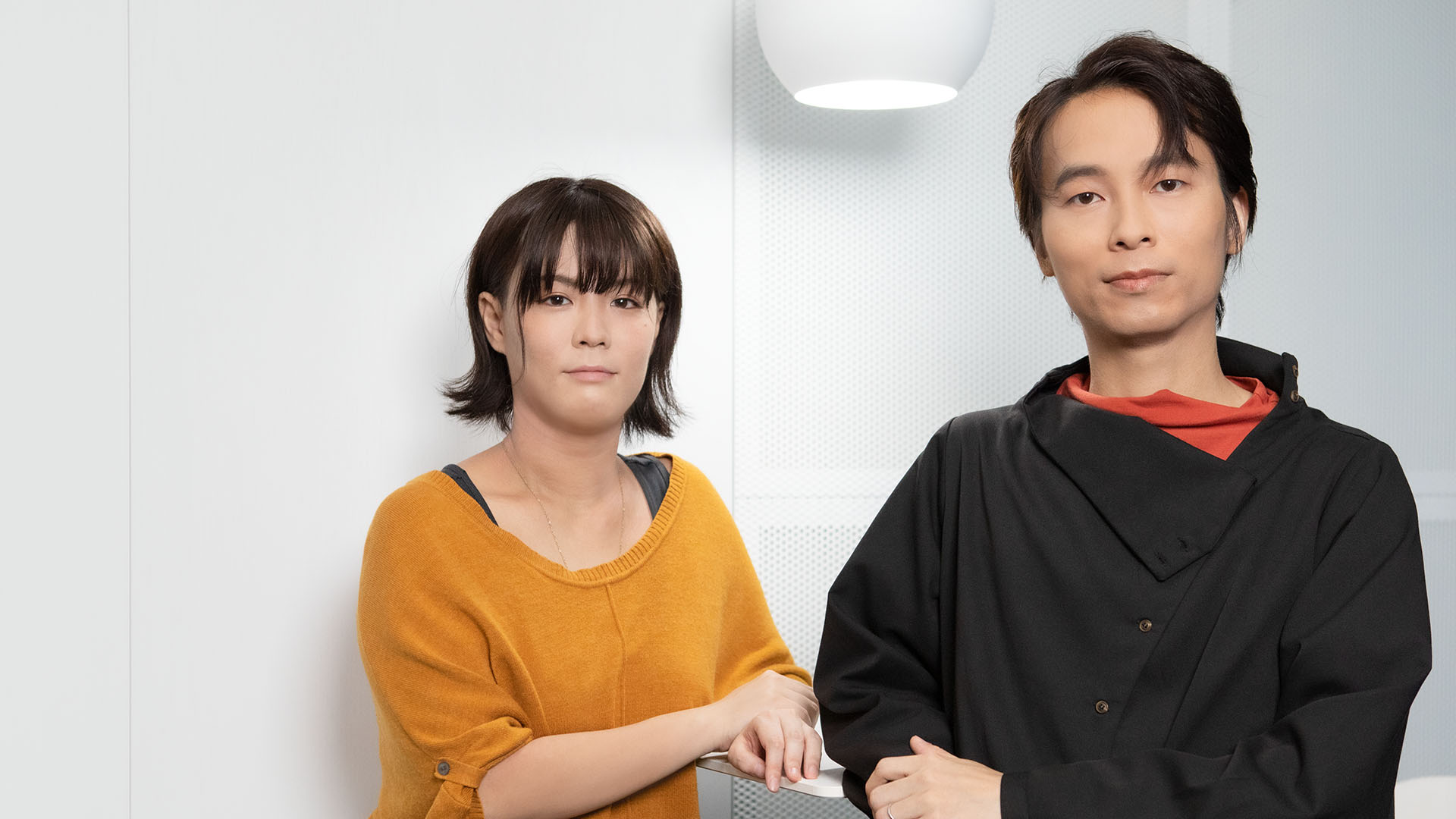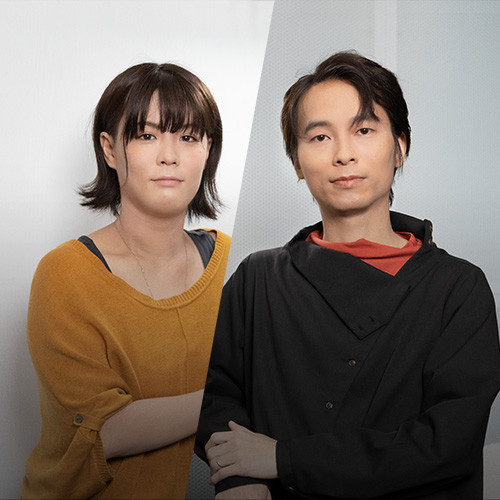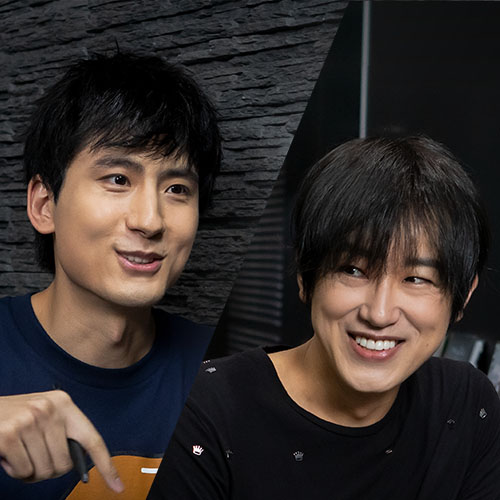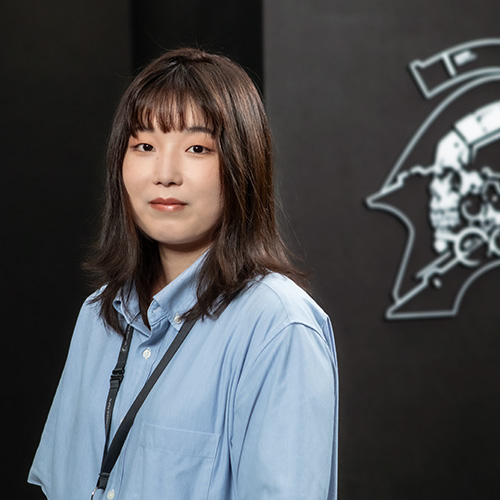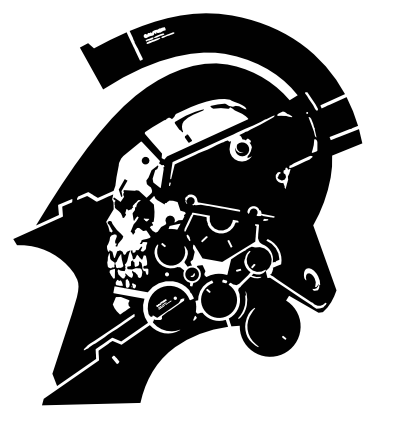There are many creators that bring the world of KOJIMA PRODUCTIONS to life.
In this third interview, we sit down with two members from the Game Design team, Kenji Sakai - Game Designer, and Shoko Oya - Level Designer. Both team members offer real insight into their roles and responsibilities, giving you a glimpse into how our production group operates. We hope you enjoy our feature!
[Profiles]
Name: Kenji Sakai
Role: Game Designer
Pictured right. He lives each day to the fullest and gives each day his all. He used to hate studying, but discovered that he didn’t mind when it was related to game design. Recently he’s been wondering how to bridge that gap and share those learnings with the next generation.
Name: Shoko Oya
Position: Level Designer
Pictured left. She enjoys all sorts of entertainment, with most of it being centered around or connected game development in some way. She is determined to get the most out of every experience, and is always working to improve her knowledge. Her icon on the company chat tool is a beautifully painted plastic model.
-------------
Q. What kind of work do you normally do?
Sakai: While there are people who “mainly” do this or that, the only real distinction in our team is between Game Designers and Level Designers. At KOJIMA PRODUCTIONS, things aren’t so clear-cut. It’s not a case of “this is what you are!”
As such, people are free to “mainly” do whatever they think seems interesting. I’ve ended up working on a lot of different things.
Oya: I work on level design.
This means I “mainly” create terrain, buildings, and so on—stages, in other words. I also decide on the placement of enemies and items, their orientation, and how the player will be guided through the level. I consider what I want the player to feel, and what choices I want them to make.
I also think about where humans tend to look. How, fundamentally, the screen is divided into three parts. I try to make use of this knowledge about games, about visuals, and also about human psychology.
Sakai: Please allow me to explain the main responsibilities of a game designer!
First, we come up with a starting point for the game’s story.
We sort of raise a banner saying “How about this!? Let’s do it!?” and involve other teams like the artists and the programmers to get things going. Creating a flow of discussion, where people are saying “this looks good!” or “how about doing it this way?”—that’s what makes me happiest.
Second, we decide how to communicate these thoughts and ideas.
This is the most important, the most difficult, and the most enjoyable part.
No matter how interesting the story you have in your head might be, you can’t just sort of...project these thoughts into reality and ask “Well? What do you think?”. So, how do we communicate these ideas? By drawing pictures? Talking passionately about them? Presenting them neatly? Making a simple movie? There are lots of possibilities, and actually, making these decisions is part of what makes game designers what they are.
I think a game designer’s work involves starting at the beginning, receiving input from everyone, then trying to realize ideas as originally envisioned—or even better. This is the kind of work I normally do.
Q. What’s the atmosphere like on the teams you work with every day?
Oya: Compared to places where I’ve worked in the past, KOJIMA PRODUCTIONS has a kind of perfect sense of distance within the teams. The team members have businesslike relationships with each other, and I mean that in the best possible way.
There’s no sense of “I don’t like that person and it’s affecting my work”, or indeed “I like that person so I’m going to favor their ideas.” We of course have casual conversations, but we also understand that we are all colleagues and that we are all equal. We respect each other.
Sakai: That sense of distance really helps you to focus on game design. It seems that in the past there were events that transcended these boundaries, board game parties, survival game events... A lot more than there are now. But because of the Coronavirus and the fact that there are people working remotely, there are fewer of those events these days.
*Currently we are not hiring for ful l-time remote roles.
Oya: The events we do have are film screenings for staff or opportunities to learn about the world view of films and other productions, and these are also businesslike events. Though of course, these events also have the purpose of bringing staff closer to each other.
Sakai: Teams have created general chat rooms within the company’s chat tool, and there’s a lot of casual conversation taking place every day, so it’s not like there’s a lack of communication. People shouldn’t worry about that! When it's all said and done, it's definitely a really good environment for developing video games!

Q. What made you join KOJIMA PRODUCTIONS?
Sakai: I was originally kind of seconded to KOJIMA PRODUCTIONS to help out, but I ended up joining full time since I had connections there. There was one factor which made it an easy decision, though: the good atmosphere I’d experienced within the team; the strong awareness that we were creating something new. I had a feeling that I’d like to continue helping the company, and so I became a full-time employee.
Oya: There were certain things I was looking for in my new job.
The first was that I wanted to work on games that sold internationally.
Japan-only games are, essentially, closed off. Everything, from the art to the systems, is aimed at the Japanese market. I wanted to create things that sold all over the world instead, things that would work in all sorts of different countries.
Also, I simply hadn’t experienced really large-scale development before, and I wanted to see what it was like.
The second factor was that I wanted to be involved with games that had a clear concept.
There are some games that are conceptually vague and nebulous. When the concept is established clearly at the top—“I want to give players this feeling”; “I want to show this drama”—then the people below can work without confusion.
I thought about these requirements, and decided on KOJIMA PRODUCTIONS. I’ve certainly found what I was looking for here. In fact, I feel very similarly about the place now I’m on the inside as I did when I was on the outside.
Q. What kind of portfolio did you hand in when you applied for the job??
*portfolio submission requirements differ by positions.
Oya: I originally worked in level design, so I needed to present my work visually. My portfolio summarized my roles on various titles I’d been involved with. Basically, I prepared a portfolio that was a visual representation of my resume.
However, only a few of the titles I had been involved with were actually released, so I also included level designs that I’d created on my own time using UE4 (Unreal Engine 4). I also included some 3DGC and rough sketches.
Broadly speaking, you need to represent the work you’ve done so far in visual form, and supplement it with some of your personal projects. I think of it as providing evidence of what I’ve done, rather than just talking about it.
Sakai: Showing concrete examples is the most important thing. For example, there are people who take a game that’s actually been released and say, “I could make it better!”. That kind of spirit is great, but you need to go one step further and show what you’ve actually done; what you’ve actually proven, in order to be able to explain what you can do.
Oya-san included supplementary information about the work she’d been involved with. There was enough information to be able to say “Okay, if she can do this, then we can probably ask her to do that.”; “These are the kinds of interests she has, she’d be able to help out on that title.”, and so on. Alongside the interview, it allowed us to get an understanding of the person we were dealing with in a really nice way.
It sounds as though this is related to the essential idea of good game design starts with having strong communication, as mentioned in the heading of this interview!
Sakai: That’s right. A game designer’s work has already begun before you create your portfolio and have your interview. Anyone who’s aiming to be a game designer should start by trying to gather their thoughts and experiences in a similar way!
Q. What characteristics do game designers tend to have? Or what characteristics do the people you work with have?
Oya: I’d say...they’re people with strong spirits.
In my boss’s words, “people who, when their ideas are rejected, don’t get disheartened and instead present their own revisions. People who come up with good starting points and then stick to these ideas.”
Sakai: If I were to add to that, I’d say... They’re people who say “Let’s do it more like this!”, “Let’s improve!” “Let’s make it better!” I think “surprise” is the key word.
Players want to be surprised, they don’t want to do anything that doesn’t move them. They’re looking for stimulation, in one way or another. So, I’d actually like game designers to approach the interview in the same way, thinking of ways they can surprise us!

Q. What do you like about KOJIMA PRODUCTIONS?
Sakai: That’s a difficult question. ...It’s fun! It’s really fun!
In my opinion, the process of creating games at KOJIMA PRODUCTIONS is in itself more enjoyable than any game that’s currently on the market. If we created the “Creating Games at KOJIMA PRODUCTIONS” game, it would be a hit. A huge hit!
Thinking of how we can surprise players, or what innovations we can bring to the industry, is fun. That’s what I like about KOJIMA PRODUCTIONS: this “game creation game” I’ve just described.
Oya: For me, the team atmosphere is just right, and that’s the most important thing. Also, there are a lot of real heroes at the company, people who’ve fought a lot of battles in the past, and that excites me every day. I think it’s amazing that there are people here who were involved in games I played when I was at school. The fact that they’re still working, and that I get to work alongside them, really excites me.
Sakai: Speaking of the people at the company, Chiba-san, the artist featured in the first staff interview, is really amazing.
One day, in Chiba-san’s daily report, I saw the wise words: “we mustn’t underestimate the thickness of a bird’s breast plate”. He also said that the modelling was “still lacking something”. On first glance, I thought it was a really beautiful model of a bird, but then Chiba-san gave the feedback above... KOJIMA PRODUCTIONS is a group of explorers, people always searching for better. Perhaps even in a slightly perverse way – and I mean that in the best way possible.
Because of the presence of these people, I think we’re able to produce content with a higher degree of granularity, and we have to take that into account when planning. This is exactly why a team is needed.
When I think about it like this, the people I work with are also a major thing I like about KOJIMA PRODUCTIONS.
Connections are the important thing. The company is a box. The people inside it are what’s important, and I like our people.
Q. Tell us about your future plans.
Sakai: For me, well... I’m kind of awkward, but I’m the type that always gives life my all. I give each day my all, then sleep.
More and more recent games have amazing graphics and super-fast processing speeds, especially compared with what came before. Working in the games industry is all about trying to find even better graphics, even better stories than what’s currently out there. However, I do think that it’s actually getting harder to create truly innovative systems, truly new experiences.
In light of which, right now is the only time that we—working together as one “developer”—can experience new ideas and environments that no one has ever seen before. I hope to continue to be involved in that in the future, and I intend to give my all to living in this world!
Oya: As a member of the team that’s been formed at KOJIMA PRODUCTIONS, I always want to be a top-quality cog. A “cog” might sound like a bad thing when you first hear it, but cogs can generate great power, and engage well with others. Egos are important, of course, but if I’m trying to create something great, I want to do it with empathy and attachment to the work.
Sakai: One last point!
This is probably true of all development environments, but the “game creation game” can fundamentally only be played for a limited period, so if anyone would like to come and join KOJIMA PRODUCTIONS and play in multiplayer mode, please let us know!
-------------
For more insight into other creative disciplines, be sure to check out our other interviews:
https://kojimaproductions.jp/en/careers_interview
KOJIMA PRODUCTIONS respects each employee's unique work style.
For more information, please check out our HR interview: https://www.kojimaproductions.jp/en/HR-interview
As we grow our team, we have opened several new positions.
Fore more details on our open positions, please visit our CAREERS page on our website:
https://www.kojimaproductions.jp/en/careers




